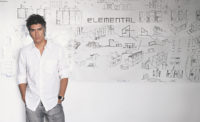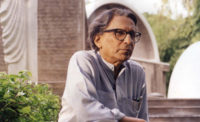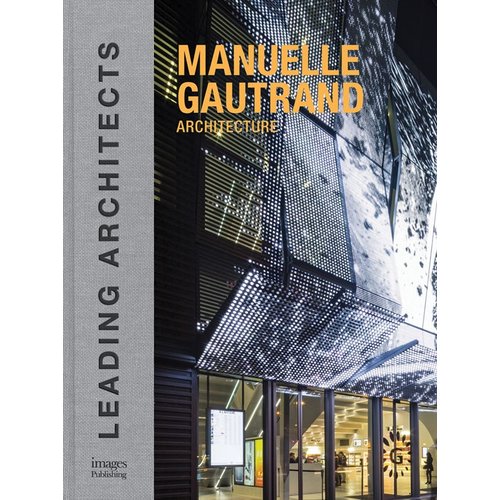The Hyatt Foundation, which sponsors the Pritzker Architecture Prize, has announced Shigeru Ban as the recipient of the award for 2014.
Since opening his firm, Shigeru Ban Architects, in Tokyo in 1985, Ban (who now has additional offices in Paris and New York) has followed a bipartite career characterized both by inventive, socially conscious responses to emergency relief situations and a varied modernist approach to private, institutional, and commercial projects. The Pritzker jury, seemingly mindful that, in earlier times, the award, which began in 1979, tended to go to glamorous design types (Philip Johnson, Richard Meier, Richard Rogers, Norman Foster, Renzo Piano, etc.), cites Ban for his “contributions to humanity” as well as excellence in design. Ban’s efforts have “expanded the role of the profession,” the jury notes, due to the laureate’s interaction with governments, public agencies, philanthropists, and local communities. Ban explains “I started working in disaster areas because I was a little disappointed about my profession. Architects mostly work for the privileged...I thought architects should have more of a social role. If people lose houses in a disaster area, there is no architect to help.”
Born in 1957 in Tokyo, Ban attended Southern California Institute of Architecture (SCI-Arc) before getting his B. Arch. from The Cooper Union for the Advancement of Science and Art in 1984. Ban decided he wanted to study at Cooper Union after coming across an article in A+U about the architecture and educational thinking of John Hejduk, then dean of Cooper Union’s architecture school. But when he found out that the school did not accept foreign students—only transfers from U.S. schools—he enrolled in SCI-Arc, which Ray Kappe had recently founded in Los Angeles. After entering Cooper Union, Ban took a year off to work for Arata Isozaki in Tokyo, and returned to his home city after graduation. On a trip abroad with Yukio Futagawa, a photographer and founder of Global Architecture magazine, for whom Ban briefly worked, he encountered Alvar Aalto’s architecture. “It changed my life,” says the Pritzker Prize winner. “I hadn’t appreciated Aalto before. But I was shocked to see how he used context, climate, and natural materials.” Back in Tokyo Ban subsequently designed an installation for an exhibition on Aalto, where he used paper tubes for the first time.
The civil unrest in Rwanda in 1994, which left two million refugees homeless, led Ban to apply his paper tube concept to emergency shelters, and he convinced the United Nations to hire him as a consultant. The next year, after an earthquake in Kobe, Japan, Ban (with student volunteers) created paper log houses and a temporary Takatori Catholic Church, formed of paper tubes. Since those early days, when he founded the Voluntary Architects Network, Ban has turned into the go-to architect for disaster relief for emergency situations in Turkey (1999), India (2001) , Sri Lanka (2004), Sichuan, China (2008), and Haiti (2010). His Container Temporary Housing in Onagawa, Japan, for the survivors of its tsunami and earthquake of March 2011, creatively turned shipping containers into living quarters. Last year, his Cardboard Cathedral, another temporary structure of paper tubes, opened in Christchurch, New Zealand, as part of its rebuilding effort after a February 2011 earthquake.
Ban’s career also includes private commissions for permanent structures such as those for two RECORD Houses published in 2001 and 2003. In these more elaborate projects, Ban often develops materials and techniques explored in his emergency relief work. For example, regarding his Naked House (RECORD, April 2001, page 148), the Pritzker jury cites Ban’s exploitation of modest materials and techniques—such as clear corrugated plastic—to create a “sophisticated layered composition” with an “efficient environmental performance.”
In the Paper Art Museum in Shizuoka, Japan (2002), Ban explored the use of fiberglass-reinforced panels with stacking shutters and awnings, an idea that anticipated his Nicolas G. Hayek Center for the Swatch Group Japan in Tokyo in 2007. With Dean Maltz, Ban’s partner in his New York office, he further developed the idea of retractable shutters for an open façade in the Metal Shutter Houses in Manhattan’s Chelsea district: Here steel screens roll open and bifold doors fold up so that the facade disappears.
Ban continues to experiment with paper and wood in novel ways. In 2010 he and his partner in the Paris office, Jean de Gastines, created the Baroquely outré Centre Pompidou-Metz in Metz, France (RECORD, July 2010, page 82) using glued laminated timber for a double-curved roof. Other projects making use wood’s sculptural and structural capabilities include the Haesley Nine Bridges Golf Club in Seoul, Korea (2010), which Ban designed with KACI International. “I was inspired by the shape of the golf tee for the compression-arched structure,” he says. In his Tamedia Office Building in Zurich (2013), Ban worked with timber only for the seven-story office building—“without metal connections,” he points out. Nearing completion in the U.S., the Aspen Art Museum, features not only a paper and resin screen but an unusual wood space frame.
Ban’s commitment to sustainability and use of renewable and locally produced materials in both lower- and higher-budget projects gave the jury found further incentive to award him the coveted prize of $100,000, which will be presented in June in Amsterdam. The Pritzker jury includes architects, clients, critics, and academics—Ban himself was a juror from 2006 to 2009. Currently, Lord Peter Palumbo is the chair, and jury members are Alejandro Aravena, Justice Stephen Breyer, Yung Ho Chang, Kristin Feiress, Glenn Murcutt, Juhani Pallasmaa, and Ratan Tata, with Martha Thorne as executive director. “I was not expecting it, “ says Ban about the award. “But it is an encouragement to continue training myself and to keep working on disaster relief.”
Shigeru Ban Projects in Architectural Record
We look back at some of the 2014 Pritzker winner's most notable projects featured in our archive—from his humanitarian work to his high-end residential projects.
Shigeru Ban's Cardboard Cathedral

For Aspen Museum, Shigeru Ban Takes His Cue from the Snowy Slopes

Shigeru Ban Offers Aid to His Native Japan

Shigeru Ban Aims to Build Waterproof Shelters in Haiti
Shigeru Ban Bridges Stone and Cardboard

Ban-Aid: The Japanese legend Discusses Architects’ Duty to Do Good


































Post a comment to this article
Report Abusive Comment